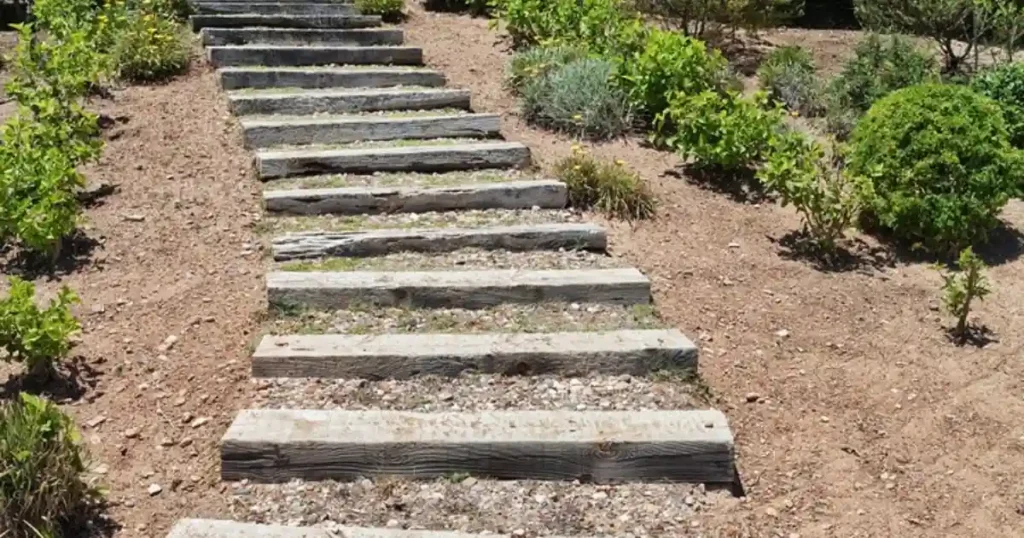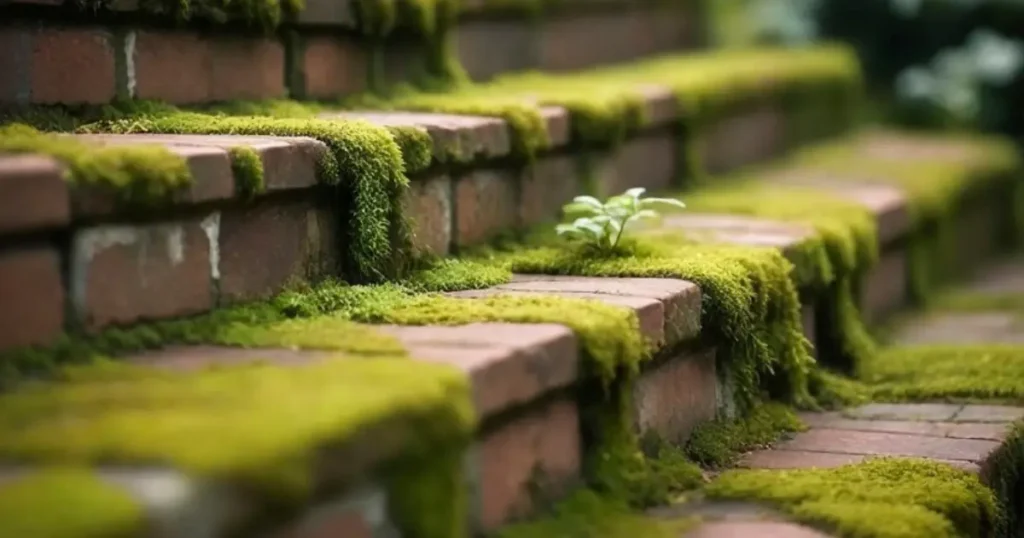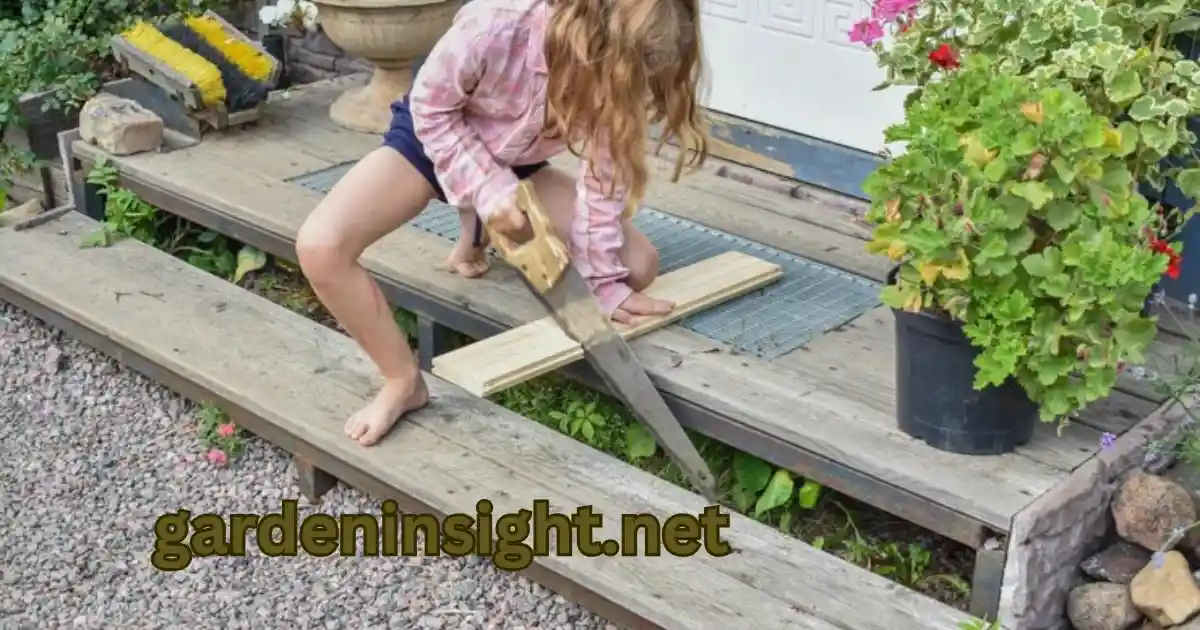Creating steps in garden can transform a sloping or uneven landscape into a functional and visually appealing space.
Whether you want to improve access, create terraced levels, or simply add an attractive design element, building garden steps is a rewarding project.
This guide will provide a step-by-step approach to building garden steps, covering various materials and techniques to help you achieve the perfect staircase for your outdoor haven.
Planning The Steps In Garden

Before you start building steps in garden, careful planning is crucial for successful garden steps.
- Assess the slope: Measure the height and length of the slope to determine the number and rise of each step. Aim for a comfortable rise of 6-8 inches and a tread (step depth) of at least 12 inches.
- Choose your materials: Consider the style of your garden and your budget when selecting materials. Popular options include wood (sleepers are a common choice), stone, brick, and concrete. Each material offers different aesthetics and construction methods.
- Mark out the steps: Use stakes and string to outline the position and dimensions of your steps. This will help you visualize the final result and ensure accurate construction.
- Consider drainage: Incorporate drainage to prevent water from pooling on the steps. This might involve adding gravel beneath the steps or creating a slight slope to each tread.
Building Stone Steps
Natural stone steps offer a timeless and elegant look. Here’s how to build stone steps in your garden:
- Prepare the base: Excavate the slope and create a level foundation for each step using compacted gravel.
- Lay the stones: Choose stones with a relatively flat surface for the treads. Set them in place, ensuring they are level and stable. Use mortar to secure the stones if necessary.
- Fill the gaps: Fill the gaps between the stones with smaller stones or gravel.
- Add risers (optional): If desired, add vertical stones to create risers for a more formal look.
Building Steps with Sleepers

Railway sleepers are a popular choice for garden steps due to their durability and rustic charm. Here’s how to build steps in a garden with sleepers:
- Prepare the ground: Excavate the slope to create level areas for each step. Compact the soil to provide a stable base.
- Lay the sleepers: Place the sleepers horizontally to form the steps. Ensure they are level and secure them with stakes or spikes.
- Backfill with gravel: Fill the space behind each sleeper with gravel to provide drainage and support.
- Add finishing touches: Consider adding soil and plants to the areas behind the sleepers to soften the look and integrate the steps into your garden.
Building Concrete Steps
Concrete steps are durable and versatile, allowing for various shapes and designs. Here’s how to build concrete steps in the garden:
- Build forms: Construct wooden forms to create the desired shape and size of each step.
- Pour the concrete: Mix and pour concrete into the forms, ensuring it is level and evenly distributed.
- Cure the concrete: Allow the concrete to cure for several days before removing the forms.
- Finish the surface: You can leave the concrete with a natural finish or add a decorative touch with stamping or staining.
Building Brick Steps

Brick steps offer a classic and sturdy option for your garden. Here’s how to build brick steps:
- Prepare the foundation: Excavate the slope and create a level base with compacted gravel.
- Lay the bricks: Lay the bricks in a running bond or other desired pattern. Use mortar to secure the bricks in place.
- Add risers: Use bricks to create vertical risers for the steps.
- Finish the joints: Fill the joints between the bricks with mortar and smooth them for a neat finish.
Building Wooden Steps

Wooden steps can be crafted from various lumber types and offer a natural, warm aesthetic. Here’s how to make wooden steps in your garden:
- Choose your wood: Select pressure-treated lumber or naturally rot-resistant wood like cedar or redwood.
- Cut and assemble the steps: Cut the wood to the desired dimensions for the treads and risers. Assemble the steps using screws or nails.
- Finish the wood: Apply a sealant or stain to protect the wood from the elements and enhance its appearance.
- Install the steps: Secure the steps to the slope using stakes or concrete anchors.
What is the best material for steps in garden?
The best material for steps in garden depends on your budget, style preferences, and the specific conditions of your garden.
| Material | Pros | Cons |
|---|---|---|
| Wood | Natural look, relatively easy to work with, cost-effective | Can rot or decay over time, requires regular maintenance |
| Stone | Durable, long-lasting, aesthetically pleasing | Can be expensive, may require professional installation |
| Concrete | Versatile, durable, can be customized | Can crack or chip over time, may require specialized tools |
| Brick | Classic look, durable, relatively easy to work with | Can be expensive, may require mortar and skilled labor |
Conclusion
To build steps in garden is a transformative project that can improve accessibility, create visual interest, and enhance the overall functionality of your outdoor space.
By carefully planning your design, choosing the right materials, and following proper construction techniques, you can create a beautiful and long-lasting staircase that complements your garden style.
Whether you opt for the rustic charm of sleepers, the timeless elegance of stone, or the versatility of concrete, garden steps can become a captivating focal point and a source of pride in your outdoor sanctuary. Remember to prioritize safety and functionality throughout the process, ensuring your steps are not only aesthetically pleasing but also safe and comfortable to use for years to come.
FAQs
Some of the frequently inquired questions regarding ways to make steps in garden are given as:
How do you make steps on a steep slope in your garden?
On a steep slope, it’s best to consider building retaining walls to create terraces. This breaks the slope into smaller, more manageable sections with shorter sets of steps. Terracing makes the steps safer and easier to navigate, especially for people with mobility concerns. You might also need to install handrails for added stability on steeper slopes.
How do you calculate the rise and run of steps in garden?
To figure out your garden steps, start by measuring how high the slope is. Pick a comfortable step height, usually between 6 and 8 inches. Divide the slope’s height by that step height to see how many steps you’ll need. Then, measure how long the slope is and divide that by the number of steps. This gives you the depth of each step.
How do you prevent garden steps from becoming slippery?
You can add non-slip strips or coatings to the steps for extra safety. Regular cleaning and maintenance are essential to prevent the buildup of moss, algae, or leaves, which can make steps slippery.
How do you landscape around garden steps?
Planting flowers, shrubs, and ground cover around the steps can help them blend seamlessly into your garden. You can also use rocks, mulch, or other decorative elements to enhance the design and create a more visually appealing space.
